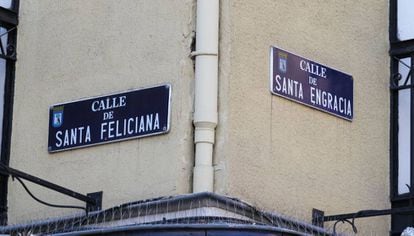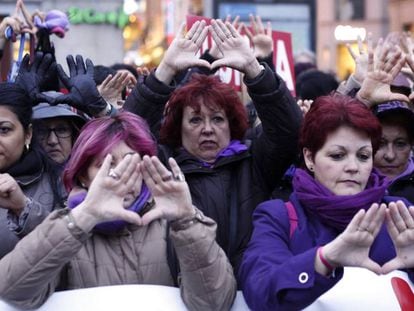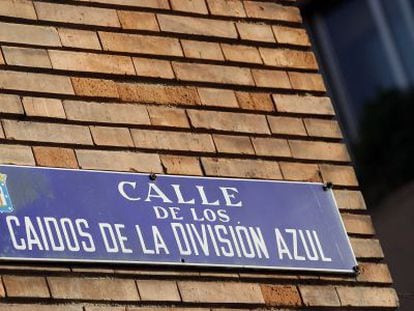Gender inequality in Spain’s street names
There are three times more roads named after men than women in Spain’s biggest cities

Men are miles ahead of women when it comes to having their names on the streets of Spain’s main cities.
Only 21% of the 9,000 streets that were reviewed in Madrid are named after a woman. In Barcelona, the percentage drops to 19% and in Valencia it’s a miserable 10%. And the discrepancy doesn’t end there. Among the women with streets named after them, 83% are either saints or representations of the Virgin Mary.
Renaming streets currently named for female saints after females scientists would be costly and unsettling for locals Berta Cao, Madrid City Council
But while expert Madrid toponymist Luis Aparisi wonders if this is simply a reflection of the society that existed years ago, when the streets were first created and christened, there has been little sign that the imbalance is being redressed as Madrid continues to develop.
The Spanish capital has labeled 350 new streets after people since the year 2000, and only 25% of these were female names. There was a shift to narrow the gap during Alberto Ruiz Gallardón’s first term in office as mayor – 48 male street names to 35 female – but the trend reversed again when Ana Botella took over in December 2011.
During her years in office, 78 new streets were named after men and only eight after women, with Botella also controversially naming a downtown square after former UK Prime Minister Margaret Thatcher. Even as outlying neighborhoods such as Vallecas, Carabanchel, Sanchinarro, Las Tablas and Montecarmelo expanded, committees put forward suggestions that failed to take gender equality into account.
The current left-wing mayor, Manuela Carmena, has so far introduced three names into the street directory; two men – Real Madrid soccer legend Alfredo di Stéfano and Socialist politician and gay rights activist Pedro Zerolo – and one woman, Lucrecia Pérez Matos, the first female victim of racist crime in Spain, in 1992. And it looks as though she will not have much opportunity to add many more women’s names as, according to the data, the number of new streets has fallen sharply in recent years.
The location of the streets is another indication of gender inequality. Men dominate the center of the city and the avenues, while women pop up in the outlying and rather more modest neighborhoods.
Between 2000 and 2010, Barcelona made a bid for gender equality on the streets, with half the new names belonging to women, according to city council statistics. And while there are huge gaps in the data on this subject, compared to the 1990-1996 period, when only 27 new streets were named after women compared with 120 after men, the city has progressed in leaps and bounds.
Virgin Mary and the saints
But the issue of female representation is not just about numbers, it’s also about profile. A look at the women who lend their names to streets in Madrid shows that 83% were selected for religious reasons – either they are representations of the Virgin Mary or saints, a trend that is somewhat less prevalent among the men.
While there are plenty of streets named after men hailing from both the Church and the military, there are also 70 doctors, 19 mayors, 15 teachers, 14 corregidores (historically, local representatives of the royal crown) and 14 painters, not to mention councilors, poets, architects, presidents, aviators and engineers. The only profession attributed to women is that of teacher, which figures twice.
Given that renaming streets is a complex and costly business, it may take some time before gender equality is on the urban map in Spain. In fact, it simply isn’t done unless it’s a case of historical memory, or the process of recognizing the wrongs committed during the dictatorship of Francisco Franco, Spain's head of state from 1939 to 1975.
Only 25% of new streets in Madrid since the year 2000 have been named after women
“We could rename half the streets currently named after female saints after females scientists, but it would be costly and unsettling for locals,” says Berta Cao, Madrid City Council’s gender equality advisor.
So now it’s a question of redressing the imbalance with female names for educational and cultural centers. Those in charge of coming up with names for four cultural centers in the Retiro area, for example, have been asked to keep in mind “the contribution made by women, given that they are under-represented in the area.”
NB: The figures above are an estimate. Only streets of more than one word have been included in the study. Source: an estimate based on the street plans belonging to each city council.
English version by Heather Galloway.












































